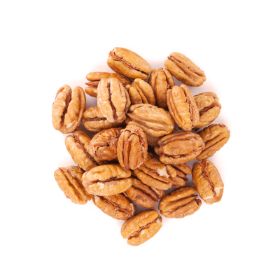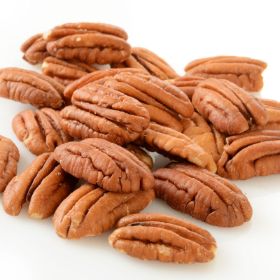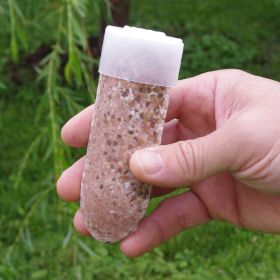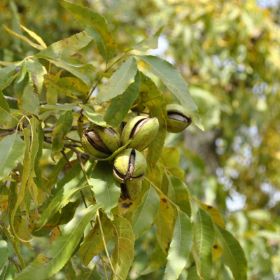Description
About the Elliot Pecan Tree
The Elliot Pecan Tree is a sought-after gem renowned for its reliability and delectable, abundant harvests. A champion variety within southern landscapes, this tree, with its medium-sized nuts and medium-thick shells, stands as a pinnacle of excellence among pecan varieties.
Originating from a seedling discovered by H. Elliot in Milton, Florida, circa 1912, the original Elliot tree proved resistant to scab and yielded up to 250 pounds of superior-quality nuts. Widely planted in Georgia, this cultivar earned acclaim for its scab resistance and premium nut quality, making it a recommended choice for orchards.
Uses of the Pecans
Elliot Pecans boast a distinctive teardrop-shaped, small-sized nut that offers excellent quality, particularly prized for its plump, perfect halves. This variety yields high percentages of filled nuts with an impressive specific gravity, presenting a distinct hickory nut flavor. Suitable for culinary endeavors, these nuts fetch premium prices due to their quality, making them ideal for specialty markets.
Despite being smaller in size, Elliot nuts offer a high-quality, sweet, and buttery flavor profile, perfect for cooking or eating fresh. The thin shells make cracking them a breeze, revealing golden, plump flesh that’s irresistible for both culinary and snacking purposes.
Growing the Elliot Pecan Tree
Growing up to 50-100 feet in height and spreading 30-75 feet wide, Elliot Pecan trees thrive in full sun and adapt to various soil types, from clay to sand, as long as they are well-drained. With their uniform, symmetrical, broadly oval crowns and massive branching, these deciduous trees display a striking appearance, making them suitable for large properties.
As a Type 2 pollinator, the Elliot Pecan requires cross-pollination, ideally with Type 1 varieties, for optimal nut production. Hardy to temperatures as low as -20°F, it is recommended for zones 6-9, offering exceptional drought tolerance once established.
Considered a tough variety, Elliot Pecan trees are resilient against pests and diseases, making them a favored choice across southern regions. Their lush green canopies provide ample shade in summer while producing an abundance of pecans in autumn, making them ideal for naturalized, woodland, or recreational areas, as well as edible or pollinator gardens.
From its rich history to its delectable, high-quality nuts, the Elliot Pecan Tree stands tall as a testament to durability, flavor, and reliability, offering a delicious bounty that rewards both the palate and the landscape.
Protogynous Type II
Survival Guaranteed!


Since 1816, Stark Bro’s has promised to provide customers with the very best fruit trees and plants. It’s just that simple. If your trees or plants do not survive, please let us know within one year of delivery. We will send you a free one-time replacement, with a nominal shipping fee of $9.99. If the item in question is not available, we can issue a one-time credit to your account equaling the original product purchase price or issue you a refund. Read more about our warranty policy.
Characteristics
| Bloom Color | Green, Yellow |
| Fruit Color | Brown |
| Fruit Size | Small |
| Hardiness Zone Range | 6 - 9 |
| Pollination | Pollinator Required |
| Ripens/Harvest | October |
| Shade/Sun | Full Sun |
| Soil Moisture | Well Drained |
| Soil pH Level | 6.0 - 6.5 |
| Texture | Crunchy |
| Years to Bear | 6 - 8 |
Size & Spacing
Mature Size
Recommended Spacing
Zone Compatibility
Pollination
This variety requires another one for adequate pollination.
Tools & Supplies
Planting & Care
Learn all about how to grow pecan trees in The Growing Guide. An entire section of our website dedicated to your growing success.















